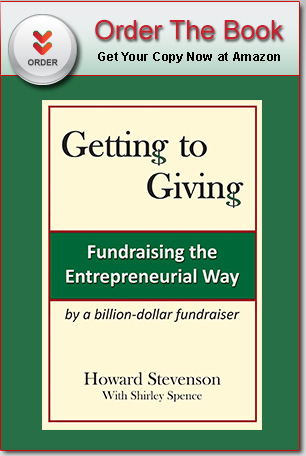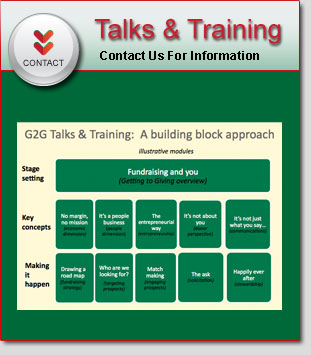1. If you have a successful first date, how do you leave it, to get to a second date?
In sales training, they often talk about the window shade being up or down; is the customer receptive, or have they tuned you out? That’s what you have to determine, at the end of your first date, and go from there. How did the prospect leave it, is the important twist on your question.
If you get a definitive “No, and don’t call me again!” you should take the hint, but not completely give up hope. Don’t pester them; they’ll get annoyed, and may complain about you to their friends. Do keep them in your file, though, and be gracious if they warm up some day in the future.
One HBS alumni told me – in no uncertain terms – to get lost. I crossed him off my list. Some time later, he asked the Dean if I was mad at him; why hadn’t I called? I just shook my head… and called. He eventually gave a million-dollar gift.
“Yes, but…” is different – and better – than “Hell, no!” If you feel the shade is open at least a crack, it’s entirely appropriate to ask if you can stay in touch.
The onus is now on you to help your prospect “get it,” and build a relationship. Does he need more information, to understand what you do, and have confidence in your organization? Is there a particular issue that needs to be addressed? Do you need to involve his spouse? Who else in your organization might he like to meet? Would he be interested in getting involved in a volunteer capacity?
If you got a “Yes, I’m interested,” the challenge shifts to figuring out a concrete proposal. What do you have that he might be interested in?
This is where “Socratic selling” techniques are useful. I probe for possible matches by using a series of increasingly abstract questions that try to get at what fundamental problem the prospect is trying to solve through his philanthropy, and then work backwards to see if our institution can offer a realistic solution to that problem. That keeps me from making false assumptions about his motivations for giving, which is an easy trap to fall into.
If all this sounds time-consuming, it is. That’s why it’s often useful to do some sort of preliminary screening of prospects, and let people self-select. One approach is to invite a select group of individuals to a speech or some other event spotlighting your organization’s work and people. Simply showing up indicates some level of interest. Coming up to you afterwards signals someone open to and worthy of follow up.
That’s happened to me many times, at occasions ranging from a talk on DNA research related to mental illness, by the co-director of Harvard Stem Cell Institute, to a Spring Gala for Summer Search, that featured students who had benefited from its leadership development programs for low-income youth. In both cases, some of the invited guests felt a special connection, and eventually became strong supporters.



